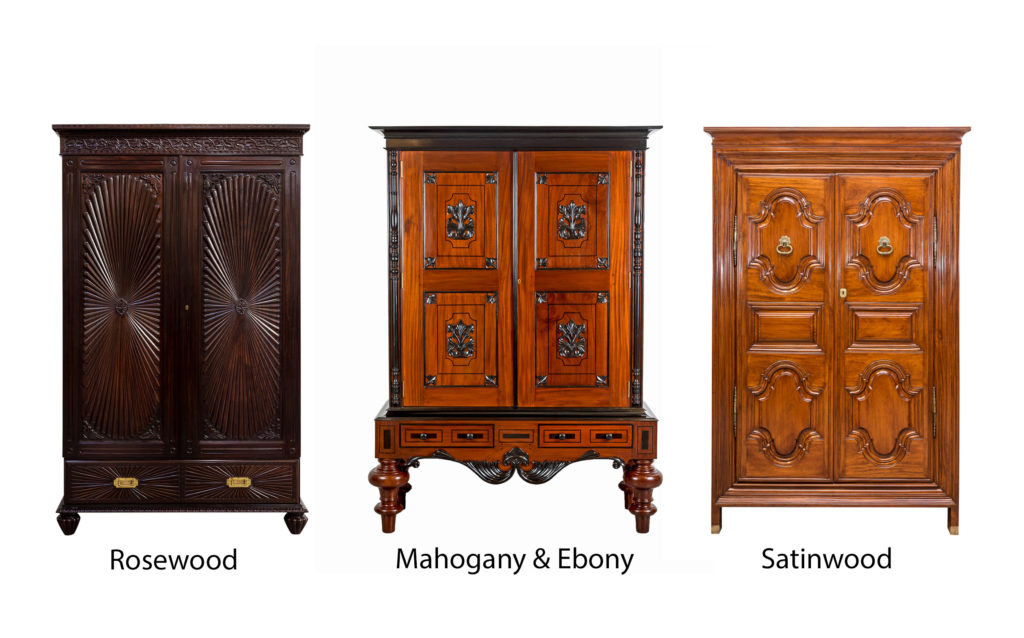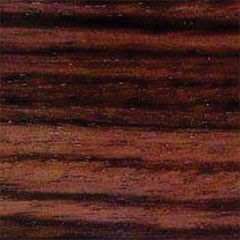Blog


FOUR EXOTIC HARDWOODS USED IN COLONIAL FURNITURE
The beauty of colonial furniture mainly lies in its historical background, its uniqueness and above all the quality of the craftsmanship and the materials used. Local craftsmen used exotic hardwoods such as rosewood, mahogany and satinwood, because these were particularly suited to the climate. Unlike softer woods, like pine, that tended to warp in the tropical humidity, these woods stood up to the most extreme conditions and were readily available.
Following a selection of wood that was used for the production of antique colonial furniture in India during the 18th and 19th century.


ROSEWOOD (Dalbergia Latifolia)
Indian rosewood is historically one of the main rosewoods of commerce and was traded alongside Brazilian rosewood for hundreds of years. Rosewood is a very dark brown exotic hardwood with an almost black wavy grain. The name comes from the scent released when the wood is cut. It is used for inlaid decoration and veneer, and was used for making solid furniture from the early 19th century onwards.
View our collection of Rosewood Furniture.

MAHOGANY (Swietenia mahogoni)
Mahogany is a reddish-brown wood, and it has been used for making furniture since about 1730. The timber was imported from the West-Indies. It is very strong, seasons quickly and does not tend to warp and split, is seldom attacked by woodworm, and is a good timber to work. Mahogany could be obtained in large enough pieces to make large table-tops without joining, which had not been possible before, and not only does it take a pleasing smooth finish but is excellent for carving. It is therefore not hard to understand why, once it had been introduced, it quickly became popular and stayed for long the principal timber used in cabinet-making.
View our collection of Mahogany Furniture.

SATINWOOD (Chloroxylon Swietenia)
Satinwood was the most beautiful and highly valued exotic hardwood used in the latter part of the 18th century and is perhaps the most widely known of decorative timbers. It is a highly figured, close-grained, hard, durable wood native to Ceylon and the East Indies. It is light yellow to golden brown in color with a lustrous satin-like quality and has an excellent finish. One other characteristic of satinwood is its aroma. When cut and worked it smells like coconut oil. Satinwood was an expensive timber, and it was used, on the whole only for special pieces for wealthy clients. It was frequently used in combination with ebony. View our collection of Satinwood Furniture.

EBONY (Diospyrus Ebenum)
Ebony, a black wood of very close grain and heavy in weight, has long been prized for its dense hardness, which lends itself for beautiful carving and a smooth finish after being polished. It is considered the aristocrat of hardwoods and is native to southern India and Sri Lanka. Ebony has always been a luxury wood and was so popular in 17th century France, that 'ebenistes' is still the French word for cabinet maker. Furniture pieces of lesser woods were often 'ebonized' (painted black) to make them look as if they were made of ebony. View our collection of Ebony Furniture.
COLONIAL FURNITURE MADE OF EXOTIC HARDWOODS
The Past Perfect Collection has an interesting and varied collection of Antique Colonial Furniture made of exotic hardwoods such as rosewood, mahogany, satinwood and ebony which can be seen online on our website and in our store in Singapore.
For the latest updates and happenings at The Past Perfect Collection, follow our social media channels – Facebook, Instagram and Pinterest.
Feel free to Contact
Subscribe to Newsletter